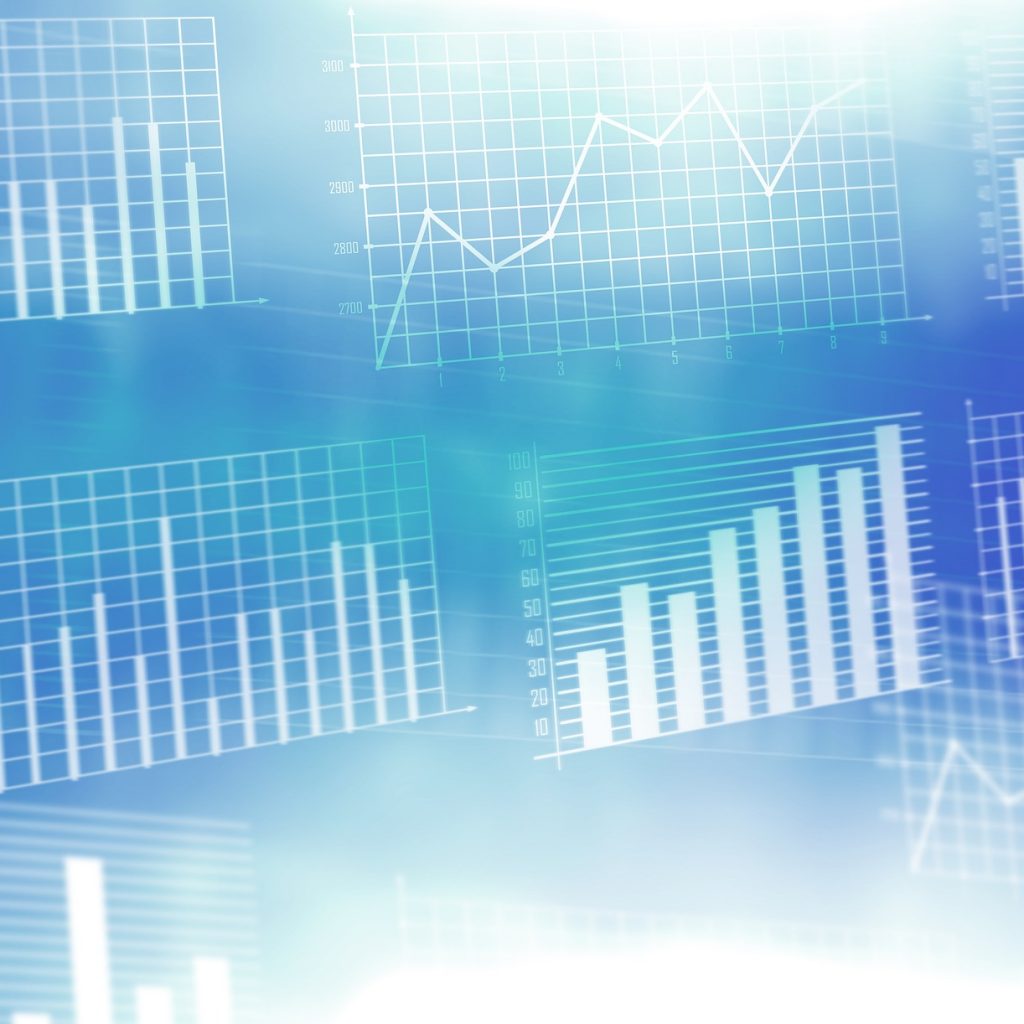HWWI commodity price index continues to rise in August
- HWWI commodity price index increases by 7.0 % (US dollar base)
- Crude oil prices rise by 3.4 %
- Strong increase in prices for industrial raw materials by 10.1 %
(Hamburg, September 15, 2020) Prices for the most important internationally traded raw materials in the energy, industrial raw materials and food and beverages sectors increased further in August. Prices for industrial metals rose particularly sharply, reflecting the rapid recovery of Chinese industry. Theindex for industrial raw materials in August 2020 was 16 % higher than in August of the previous year. Despite an increase in supply from the OPEC+ countries, crude oil prices rose slightly in August compared with the previous month. The food and beverage index also rose on average in August, as the prices of luxury foods rose, indicating corona-related uncertainty in producer countries such as Brazil and India.
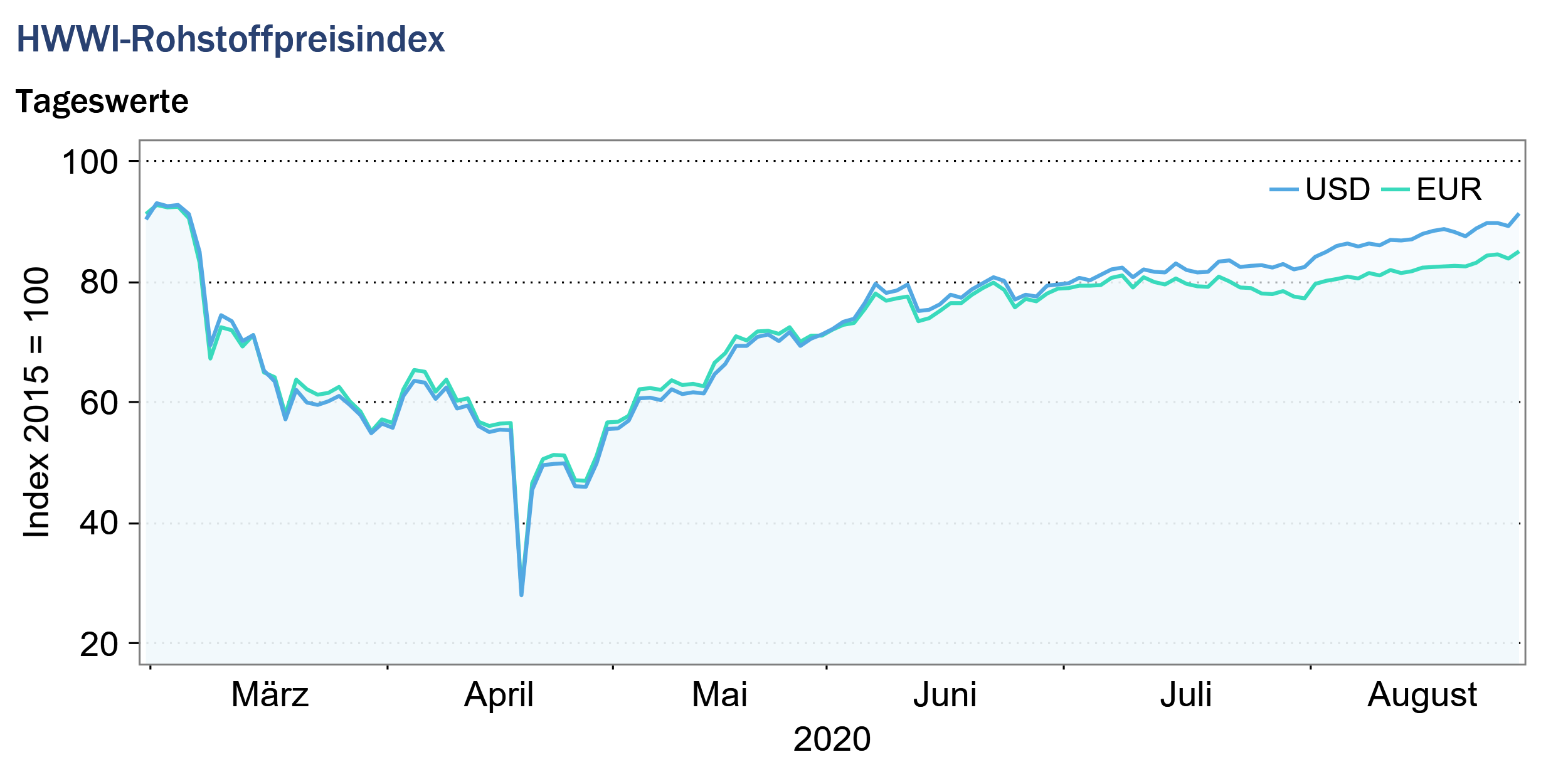
Index for energy raw materials: +6.7 % (euro base: +3.4 %)
The rise in crude oil prices continued in August and points to a recovery in crude oil demand following the lifting of the lock-down measures in many countries. The economic situation recovered, particularly in China, after the lock-down to combat the corona pandemic was relaxed and led to an increase in global crude oil consumption.In addition, U.S. oil production through fracking continued to decline in August due to low profitability caused by still relatively low crude oil prices. In contrast, OPEC+ countries increased their supply in August as the self-imposed supply cuts that had supported crude oil prices since May were eased again. However, the expansion of OPEC+ crude oil supplies only led to a slight decline in prices for a short period at the beginning of the month.
Developments on the crude oil markets will continue to be significantly influenced by the Corona pandemic. At present, the number of infections is rising again worldwide and thus the likelihood of further lockdown measures, which in turn would lead to a further decline in demand for crude oil. The OPEC has already announced that it will continue to monitor the development of crude oil prices and will counteract a renewed slump in demand with additional cuts in supply. The OPEC announcement already had a stabilizing effect on oil prices in August.
Both European and American natural gas prices rose sharply in August compared with the previous month. While natural gas prices fell in the first half of the year due to the corona pandemic, natural gas prices rose in August. The price of European natural gas has risen the most but is still almost 30 % below the price in the same month last year. The prices for Australian and South African coal moved in opposite directions in August. While the price for South African coal rose slightly, the price for Australian coal fell compared with the previous month.
Overall, the sub-index for energy raw materials rose by 6.7 % (euro base: +3.4 %) to 82.3 points (euro base: 77.2 points).
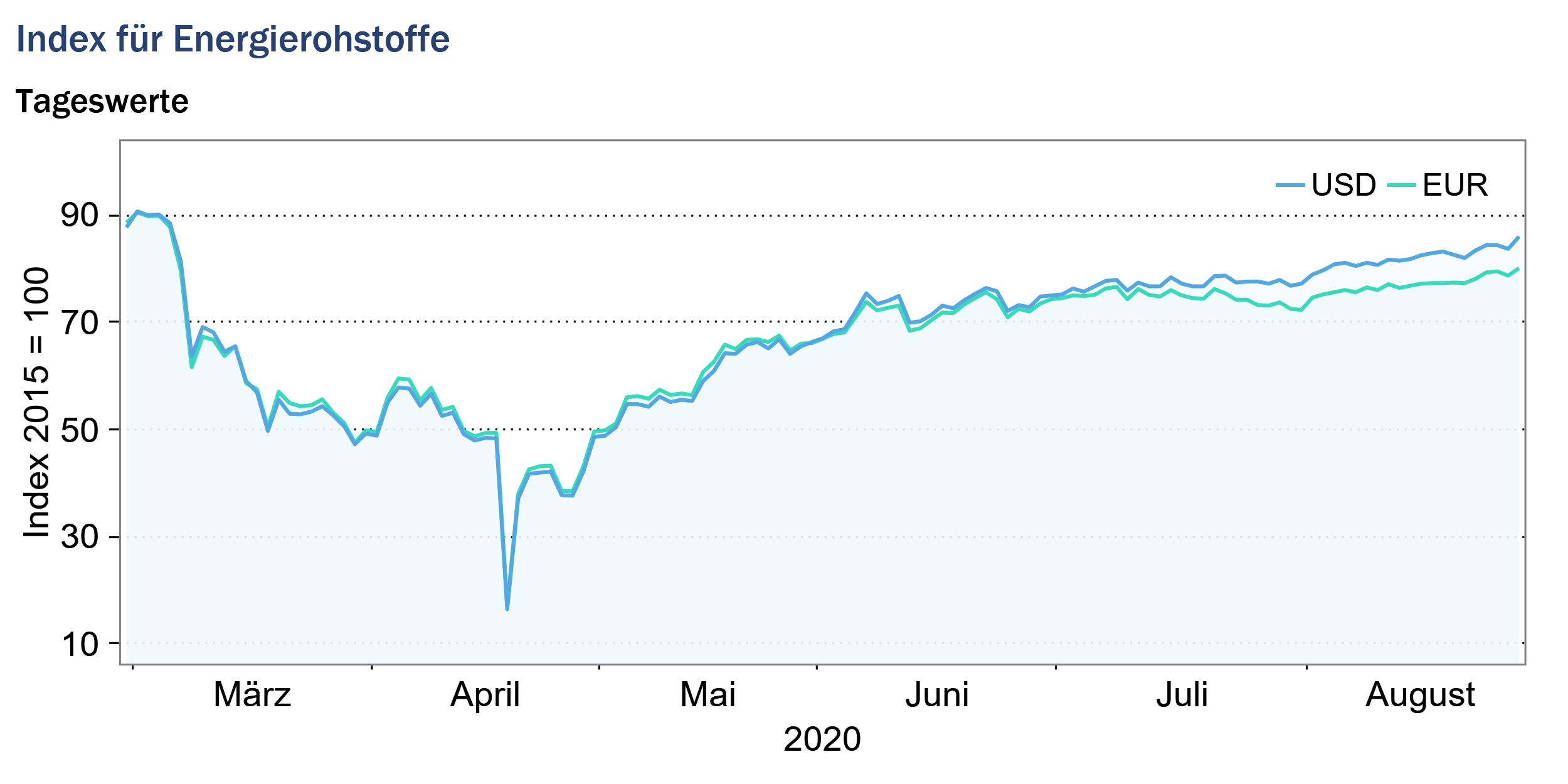
Industrial raw materials index: +10.1 % (Euro base: +6.7 %)
The sub-index for industrial raw materials is divided into the index for agricultural raw materials, the index for non-ferrous metals and the index for iron ore and steel scrap. The development of industrial metals prices also reflected the recovery of Chinese industrial production. In particular, the monthly average prices for nickel, zinc, aluminium, and lead rose sharply despite the ongoing corona crisis. The price of zinc rose most sharply by almost 12 % compared to the previous month and by over 6 % compared to August 2019.
Iron ore prices also rose sharply in August and are now almost 30 % more expensive than in August last year. The reasons for this increase can also be seen in the recovery of the Chinese industry. The Chinese economic stimulus programs, which aim to revive economic activity after the lockdown, increased demand for steel. China is both the world’s largest consumer and producer of steel and the largest consumer of iron ore. Increased demand for steel from China pushed up iron ore prices in August. In addition, supply shortages due to unfavourable weather conditions and increasing corona infections in Brazil, the world’s second largest iron ore producer, drove up prices on the iron ore markets.
The markets for wool and skins showed a different picture. Prices continued to fall sharply in August compared to the previous month. Due to global corona restrictions, demand from the textile industry fell and was still unable to recover in August. The decline in prices for hides can also be explained by a change in consumer preferences. More and more people reject animal products for ethical reasons, which reduces the demand for leather goods.
Overall, the index for industrial raw materials rose by 10.1 % (euro base:+6.7 %) to141.3 points (euro base:132.6 points) on a monthly average.
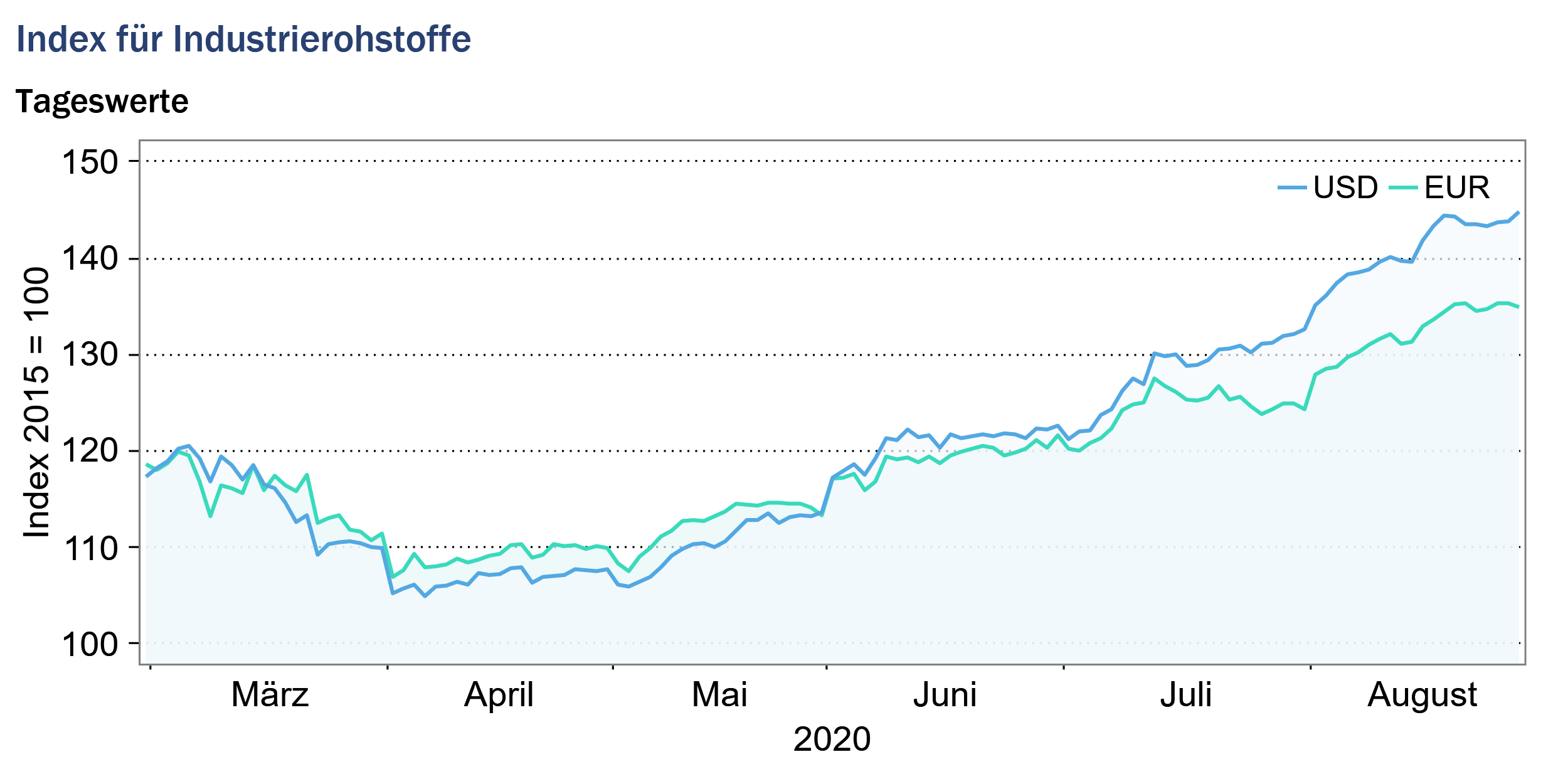
Food and beverages index: +4.5 % (euro base: +1.3 %)
The prices of raw materials from the food and beverages segment showed opposing trends in August. While the sub-index for grains fell in August compared with the previous month, the index that tracks the prices of luxury food rose. The prices for coffee, cocoa, tea and sugar rose on average in August, reflecting uncertainties regarding the supply from producer countries. Vietnam, Brazil and India are currently struggling with rising corona infections and strong lockdown measures. In addition, an increase in demand from China drove up sugar prices in particular. Prices for vegetable oils, which are also used to produce biofuel, rose in August in line with the increase in crude oil prices. The price increases also indicated the uncertainty in the Asian producer countries caused by the Corona crisis.
Overall, the index for food and beverages rose by 4.5 % (euro base: +1.3 %) on a monthly average to 93.4 points (euro base: 87.6 points).
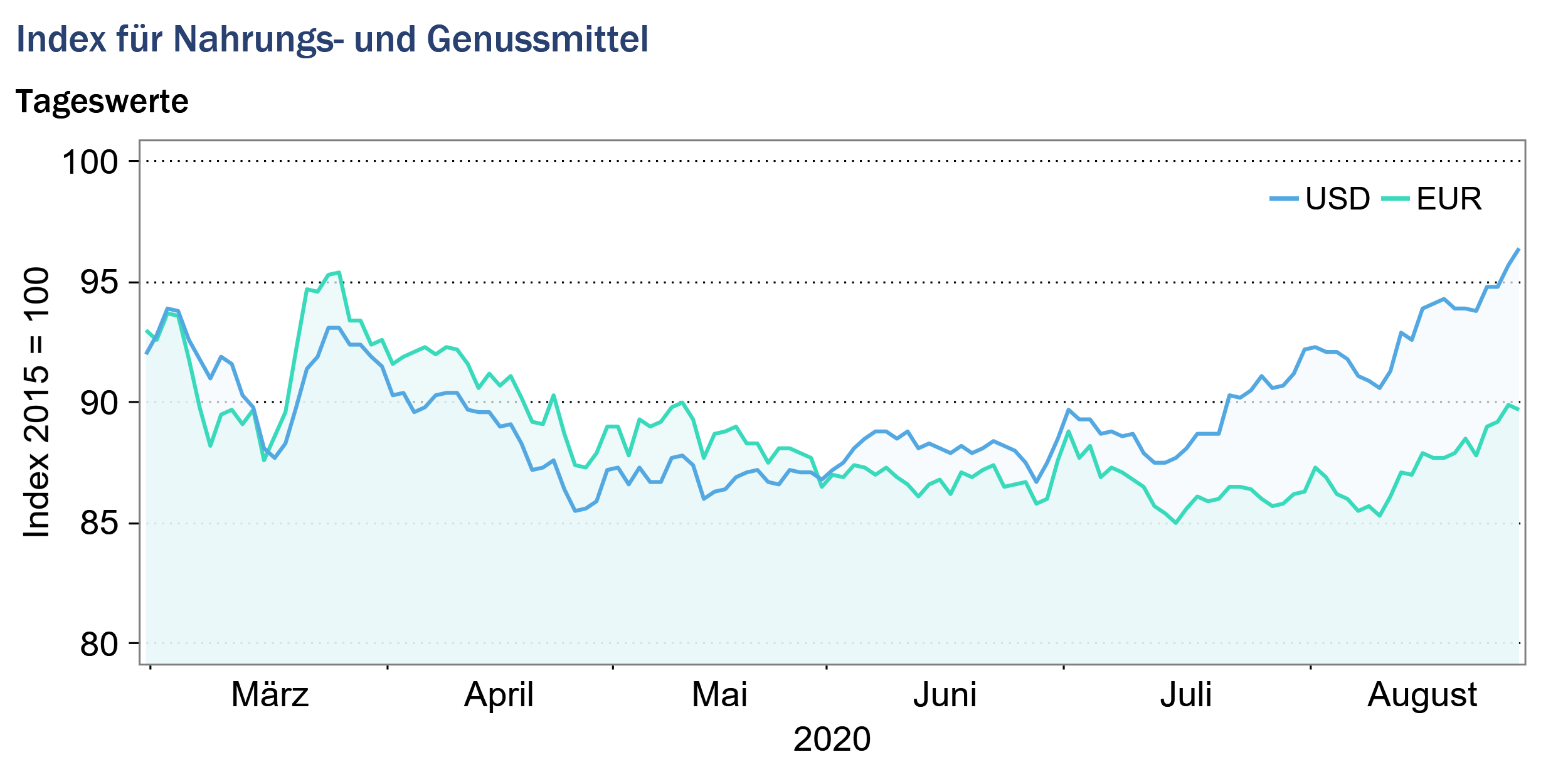
Source: www.hwwi.org
